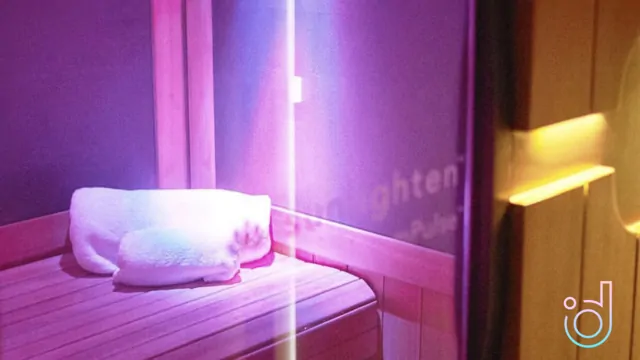Light therapy is not a new age fad, it’s been around for thousands of years for treating skin disease, depression and other of ailments. In fact, this could be one of the reasons why people experience SAD (seasonal affective disorder) – they simply aren’t getting enough sunlight. Individuals who suffer from Seasonal Affective Disorder (SAD) often report feeling depressed in the winter and their serotonin levels are proof of their emotions.
That being said, light therapy has many benefits, and so does near infrared therapy, another form of light therapy. Various forms of light therapy are often lumped together but they all have different characteristics and have very different therapeutic effects on the body.
What is the Difference Between Light Therapy, Red Light Therapy and Near Infrared Therapy?
Light therapy is exposure to light that is brighter than indoor light and is used to help with cognitive abilities that may suffer due to depression, seasonal affective disorder, or sleep disorders. If you have ever heard of a “light box,” or if you have one in your home, this is a form of light therapy. Exposing people to light for 30 minutes to a few hours a day can help stimulate a change in the levels of chemicals and hormones within the body that affects mood. Our body uses light cues to time certain functions such as sleeping, waking up and so on. How we sleep, how active we are and how we feel are regulated by our internal body clock. If ours is off, our energy levels, ability to sleep and mood is affected! This is where light therapy can come in handy.
Light therapy is on the visible part of the light spectrum (between 400 nm to 480 nm). Though slightly different from color light therapy, light therapy can help to regulate sleep patterns, improve mood, increase cognitive performance and regulate hormones.
Red Light vs. Near Infrared Therapy
Red light therapy and near infrared light therapy fall into a whole other light spectrum. The two are often confused as the same thing but they are really quite different. Red light falls into the visible part of the light spectrum between 630-700 nm on the electromagnetic scale and is used to treat the surface of the skin. Near infrared wavelengths fall into the invisible part of the light spectrum between 700 and 1200 nm. So what does this mean? The longer the wavelength, the deeper the penetration to deliver energy to the cells, stimulating healing and relieving pain. Various cell and tissue types each have their own unique light absorption methods at varying wavelengths. This means certain tissues absorb certain kinds of light. For example, light vibrating at the blue wavelength is great for skin while other colors may penetrate the skin more deeply – see LEDs in Dermatology study.
The optimal NIR technology is done by LED as you are able to control the surface temperature. Also LED disperses over a larger surface area than a RED light halogen or laser. Another major difference between LED and halogen and Laser is the way light energy is delivered (optical power output – OPD). The OPD of LED Near is measured in milliwatts and laser and halogen is measured in watts. This allows LED to have a more gentler delivery as it will not damage tissue and will not have the same risk of accidental eye injury. Also with LED NIR disperses over a greater surface area give a faster treatment time.
NASA research has found that the NIR electromagnetic frequency band of energy penetrates deeply into the body and can have a healing effect on our individual cells. For example, inside the mitochondria of every cell are receptors which respond to Near Infrared wavelengths. The light triggers an increase in cell metabolism, protein synthesis (including collagen), and anti-oxidant activity (meaning the cells detoxify). Additionally, it reduces inflammation and pain while simultaneously triggering growth and regeneration in the cells.
In short, light therapy affects mood, circadian rhythm and other body processes, while Near Infrared Therapy acts a pain reliever and cell rejuvenator – two VERY different forms of energy, but both beneficial.
Benefits of Near Infrared Therapy
Near Infrared Therapy falls on the spectrum of Infrared Light which is barely visible to the eye and is also the shortest infrared wavelength on the electromagnetic spectrum. Infrared typically includes wavelengths from 700 nm to 1 mm. Near Infrared light, however, falls in the spectrum of 700 nm to 2500 nm.
- Boosts metabolism
- Recharges mitochondria
- Stimulates white blood cell production
- Reduces body fat
- Promotes cell regeneration
- Increases energy
- Reduces inflammation within the body
- Improves circulation within the body
- Heals wounds faster
- Faster recovery time after working out
- Provides pain relief
- Rejuvenates the skin
- Lessens joint and muscle pain
- Improves flexibility
- Provides anti-aging benefits to your body
Benefits of Light Therapy
In summary, light, red light and near infrared light therapy fall in different wavelengths on the electromagnetic spectrum and provide very different benefits. ºdegree Wellness’s 3-in-1 infrared saunas provide color light and infrared (near, mid and far) therapies to provide the best therapeutic experience possible.
Additionally, there are also differences between Near, Mid and Far-infrared light! We utilize all three in our saunas to provide the most benefit for those looking to have a happier and healthier lifestyle.

